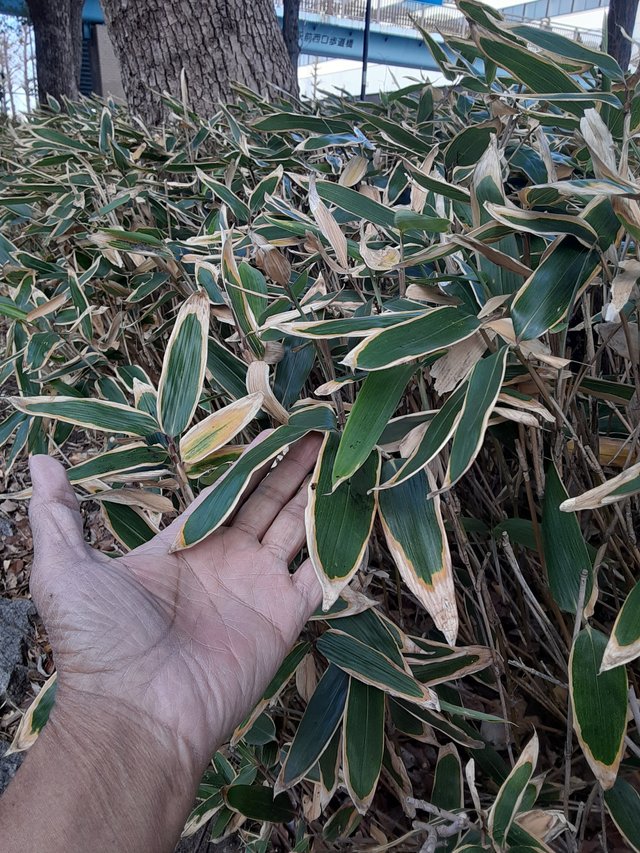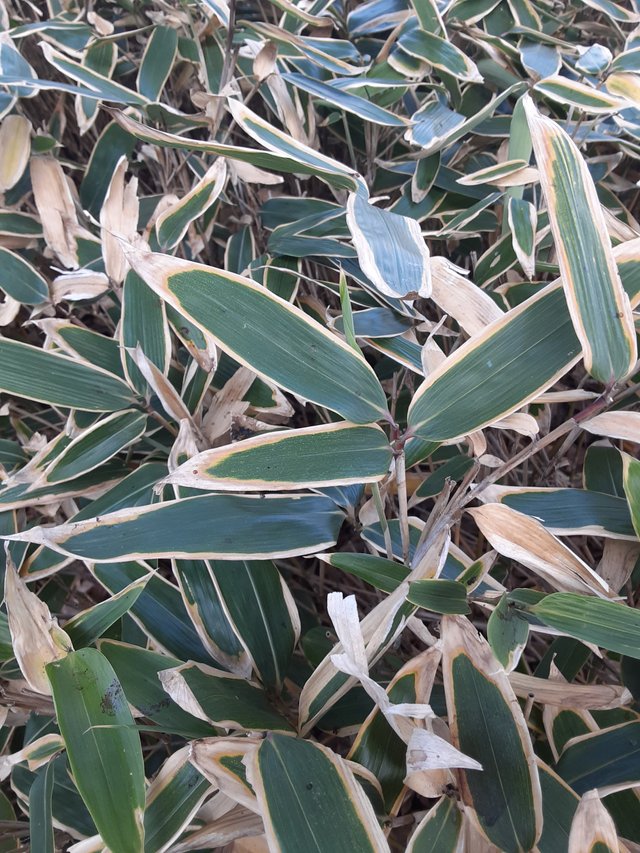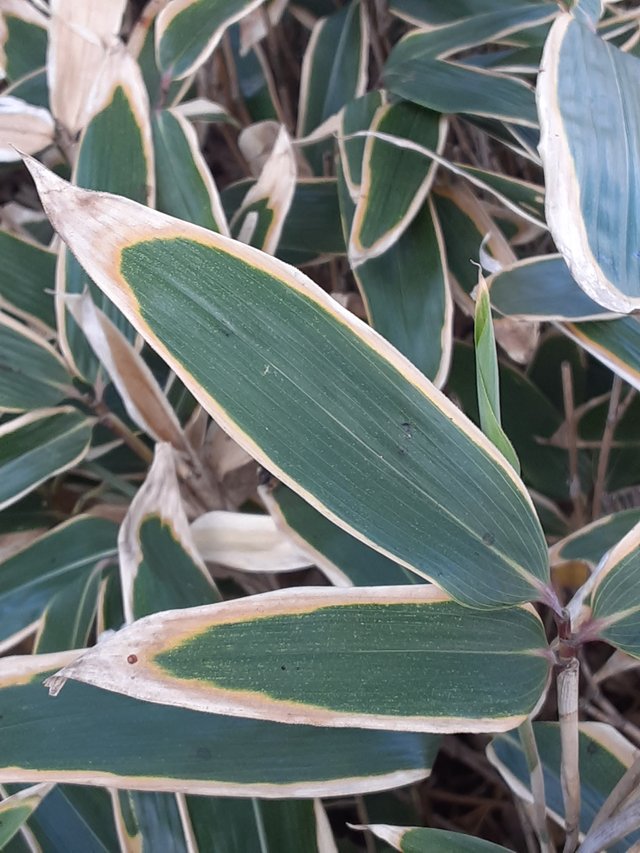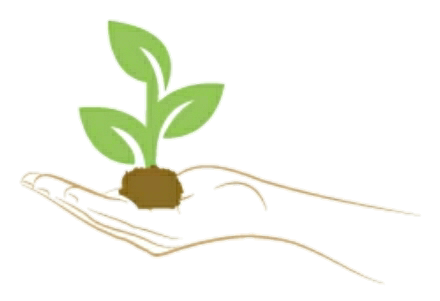
Sasa veitchii, commonly known as Kuma-Zasa Bamboo or Japanese Bamboo, is a fascinating and visually striking plant. It's a type of dwarf bamboo, forming dense, low-growing clumps that rarely exceed 3-5 feet in height. This makes it a popular choice for ground cover in gardens, especially in shady areas.
The leaves of Sasa veitchii are a key feature. They are large, broad, and lance-shaped, typically reaching lengths of 10-15 inches. What makes them unique is their color change throughout the year. In spring and summer, the leaves are a vibrant green. However, as autumn approaches, the edges of the leaves begin to wither and turn a creamy white. This creates a stunning contrast against the dark green center, making the plant look like it's adorned with delicate lace.

Beyond its aesthetic appeal, Sasa veitchii has some practical uses. In its native Japan, the leaves have been traditionally used to make tea, believed to offer various health benefits. The young shoots are also edible and can be cooked and eaten like other bamboo shoots.
However, it's important to note that Sasa veitchii can be quite vigorous and may spread aggressively if not managed properly. Its rhizomes can extend underground, allowing it to colonize new areas. Therefore, it's crucial to plant it in a suitable location and consider containment measures if necessary.

Despite this potential for invasiveness, Sasa veitchii remains a popular choice for gardeners who appreciate its unique beauty and low-maintenance nature. Its striking foliage and ability to thrive in shade make it a valuable addition to many landscapes.
Ref.:
 |  |
Upvoted! Thank you for supporting witness @jswit.
Downvoting a post can decrease pending rewards and make it less visible. Common reasons:
Submit